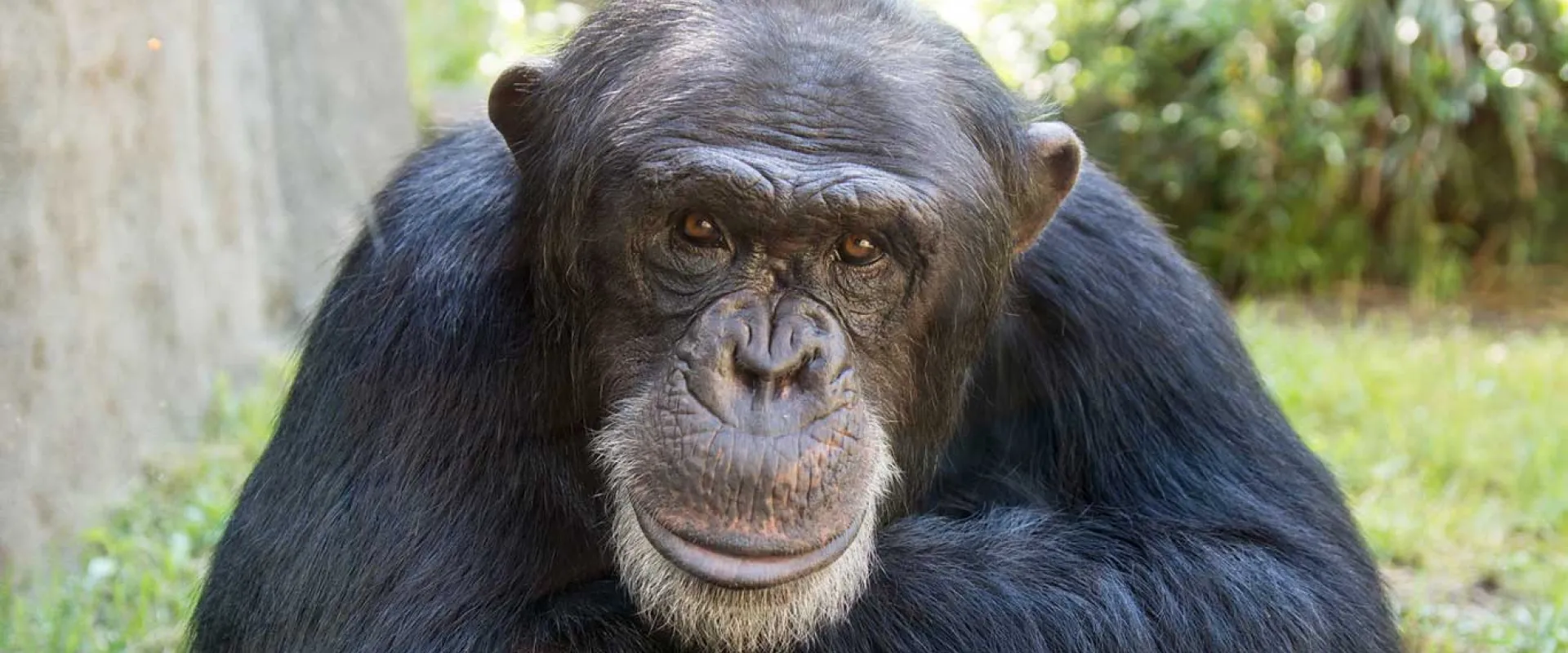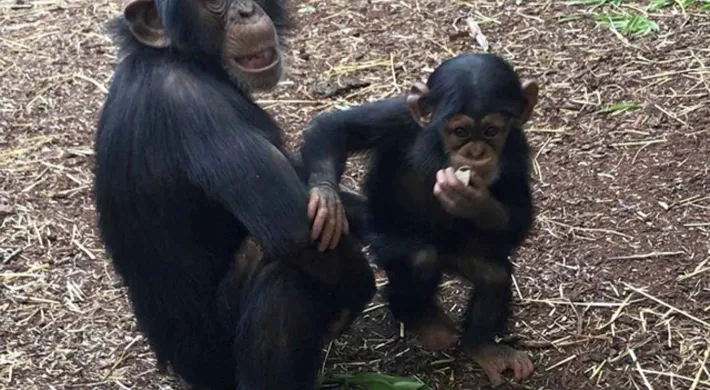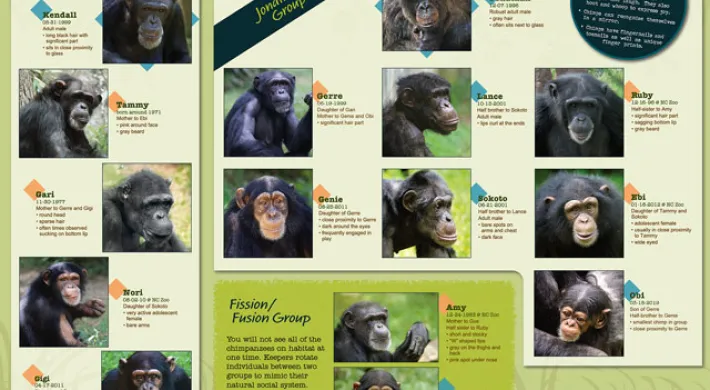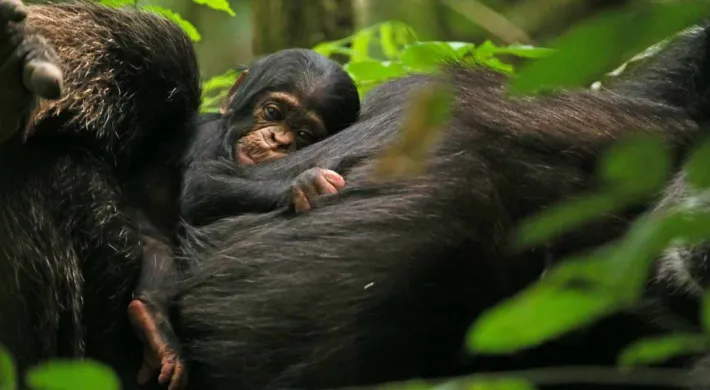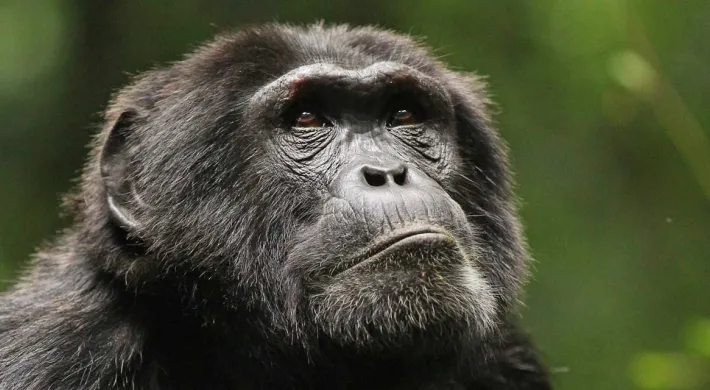Written by Jennifer Ireland, Curator of Mammals, North Carolina Zoo
Kendall is the most famous and well-connected chimpanzee at the North Carolina Zoo. He’s been in high-profile TV advertisements with Drew Carey and has met Oprah Winfrey. Sounds cool, huh? Nope.
Kendall was born at a facility that breeds chimpanzees for the entertainment industry. As an infant he was removed from his mother’s care, sold to an entertainment company and hand-reared by humans with the goal of Kendall becoming a performer. When Kendall was about 6 years old, he became too big, strong and willful for his trainers to handle. He was no longer suitable for use as a performer. Chimpanzees can live to be over 40 years old. What was going to happen to Kendall for the next 35 years of his life?
Fortunately, through the cooperation of several chimpanzee advocate groups, Kendall found a home at the North Carolina Zoo. However, this was just the beginning of Kendall’s story. Kendall had not seen another chimpanzee since he was an infant. Now he was living in the same building as 11 loud, obnoxious and aggressive chimpanzees. And his care team wanted him to cohabitate with them! This was a tall order for Kendall. Chimpanzees learn how to be chimpanzees when they are infants and juveniles. They learn from their mothers and watching the other chimpanzees in their troop. During Kendall’s formative years he was being raised by humans to act like a human. Essentially, Kendall knew more about being a person than a chimpanzee.
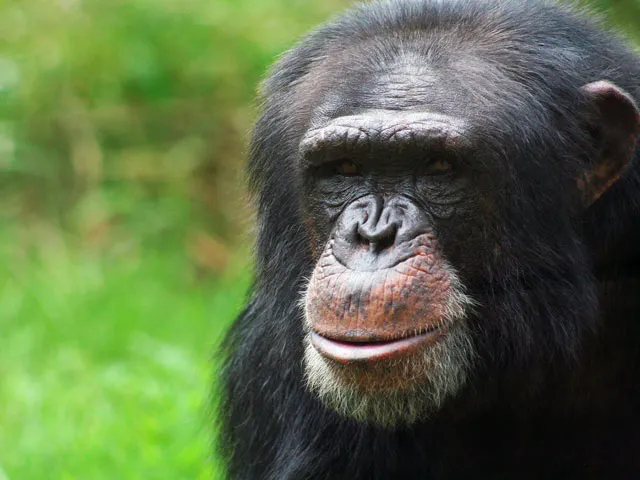
Chimp Kendall
For many months Kendall’s care team worked to find a chimpanzee that he could form a relationship with. One by one they tried integrating Kendall with various chimpanzees-young ones, old ones, males, females… It took several failures until they found success, with a chimp named Tammy. Tammy was an older, low ranking female who had her own social struggles in the troop. Tammy exhibited patience with Kendall’s abnormal chimpanzee behaviors and social interactions and slowly Kendall began to learn “chimpanzee”.
The care team built off the success of Tammy and Kendall’s evolving social skills by adding new chimpanzees to Kendall’s group. There were some failures and many successes, but ultimately integrating Kendall into the entire chimpanzee troop proved unsuccessful. There were just too many chimpanzees and Kendall’s social skills were not sharp enough to handle the complex social and political maneuverings needed to live in a multi-male troop.
Despite that, Kendall’s story is still a success. He has lived with more than a dozen chimpanzees over the course of the last 12 years. He is the leader of his own troop of females. Kendall’s group plays an important role in the management of chimpanzees at the North Carolina Zoo. Because this group is much calmer than Jonathan’s group, made up of more socially appropriate chimpanzees, it is a “safer” place for individuals who are less socially savvy, have medical concerns, or are geriatric.
Sadly, Kendall’s case is not unique. There are dozens of chimpanzees in zoos and sanctuaries across the United States with similar stories. The use of chimpanzees in advertising and entertainment is not only harmful to the individual but potentially harmful to wild chimpanzees. Research has shown that people are less likely to recognize chimpanzees as an endangered species because they see them performing in on TV, in movies or “smiling” on greeting cards and memes. You can do your part in changing this story by not supporting those companies that exploit chimpanzees in this way.
